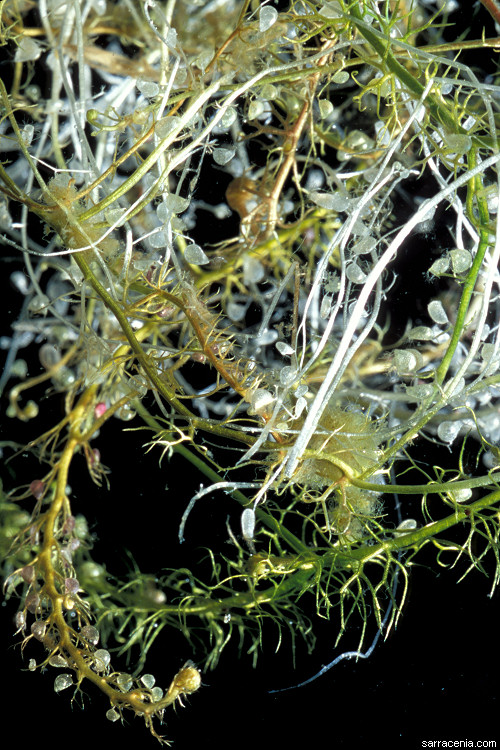
Another species:
We searched for perhaps 30 minutes
but found nothing else, so we moved to the vegetation mat on the lake's
north shore.
"What's this", Beth asked.
I looked at her pathetic, rather incomplete specimen with irritation.
Yes, she was the first to find our second species at the lake, this
time Utricularia minor--a hard plant to find under nearly any
circumstances. I forced a grimacy smile: "Great, honey, you found
another species! Good for you!"
Ugh!!!
Utricularia minor can be identified using the following characters:
1: It is usually weakly rooted or at least mired in the mucky
substrate or tangle of vegetation and decaying material, in water
only a few cm to several tens of cm deep.
2: It has small leaves that are divided into about
25 or fewer ultimate leaf tips.
3: The shoots are weakly divided into two types. The first type
is green, leafy, and bears few bladders, the second type tends to be
richer in bladders. This is can be a very subtle difference.
4: The terminal leaflet tips are threadlike (capillary) and
not flattened.
5: Viewed under a microscope, the terminal leaflet segments have
no tiny needlelike hairs (setulae) on the margins and on the
leaf tip. Verify this carefully with a hand lens or dissecting scope.
Characters 4-5 above are reliable for all plants. This species can also
easily be identified by its flowers,
or by the nature of the
"quadrifid glands" in the bladder.